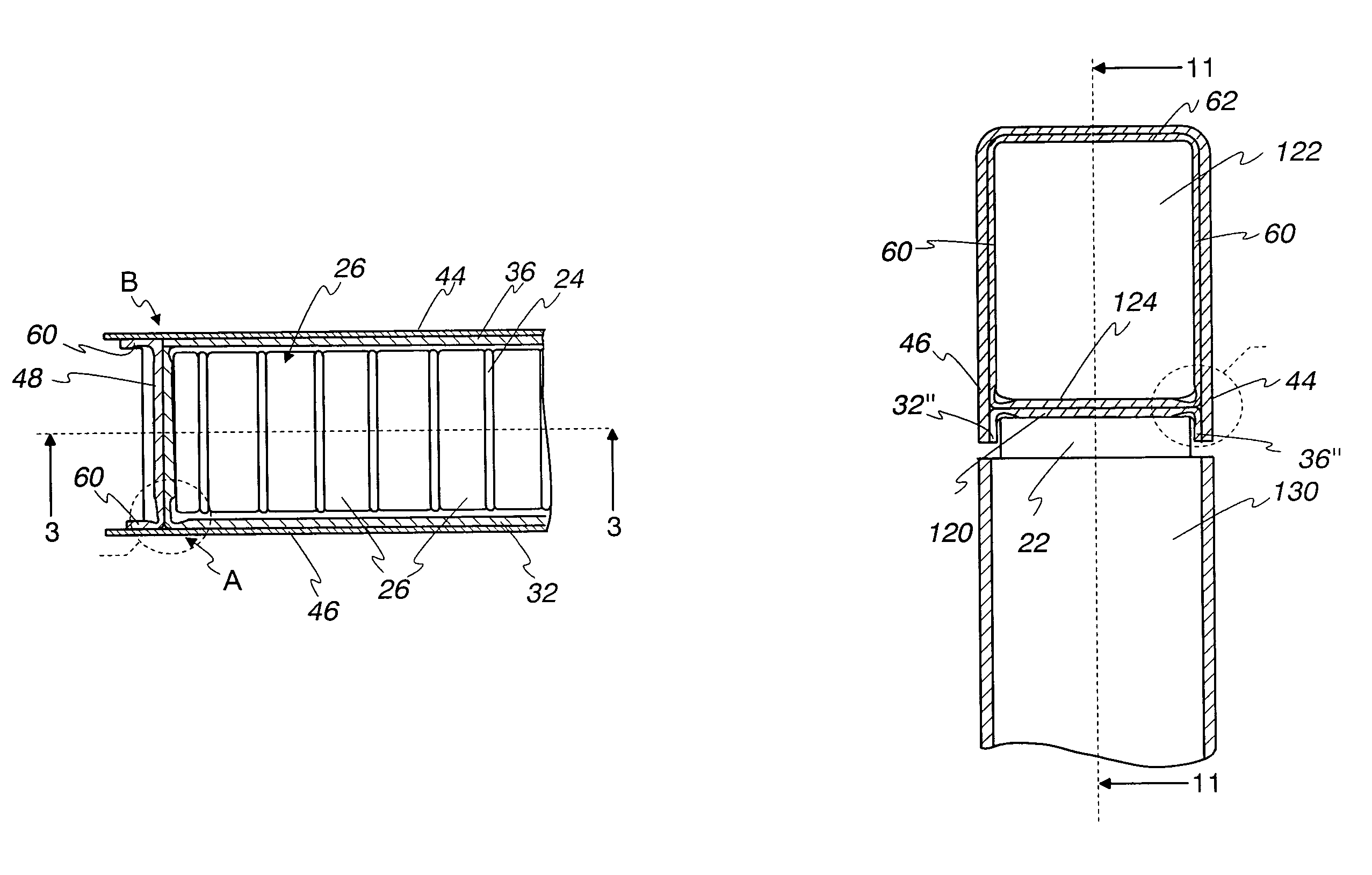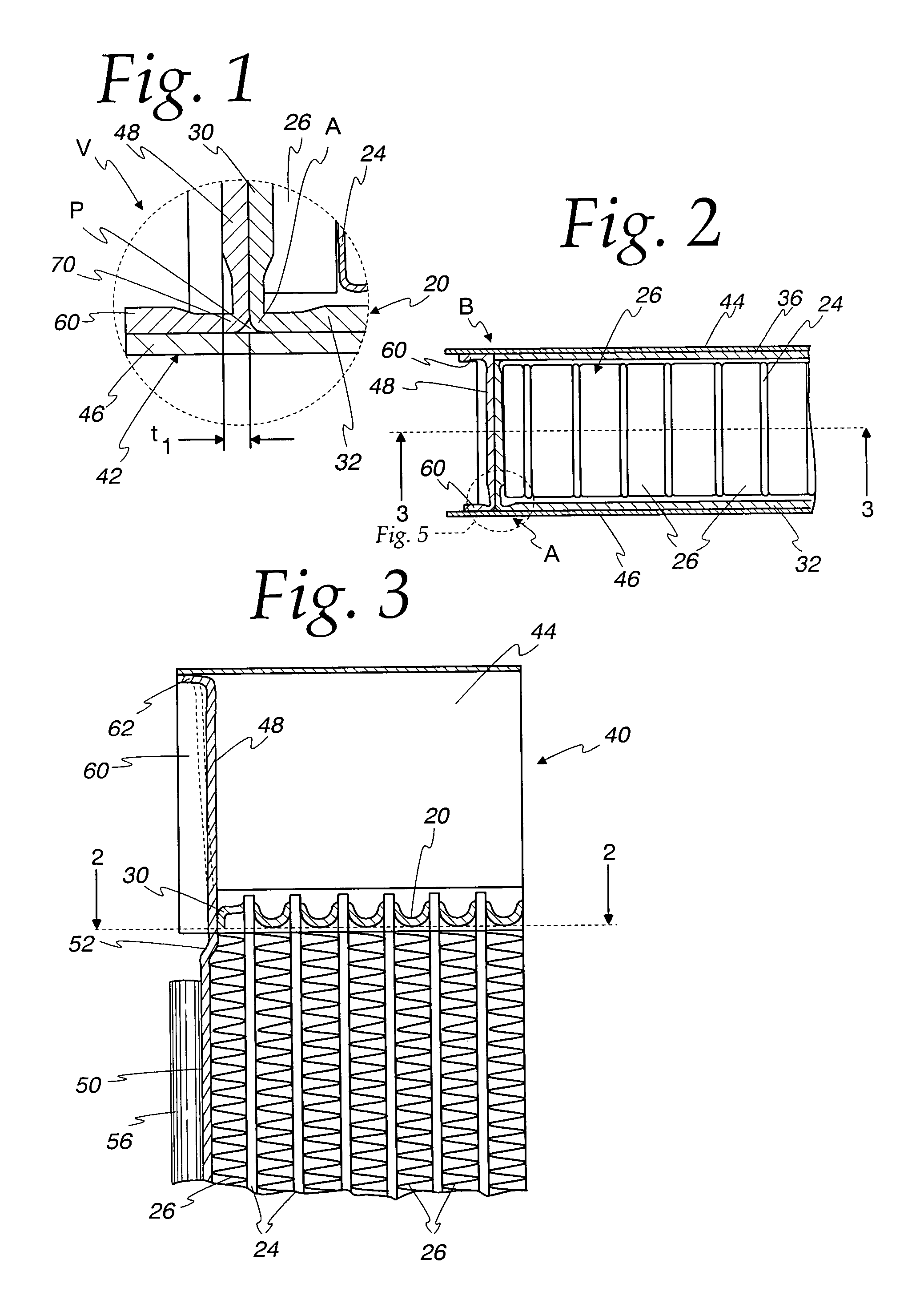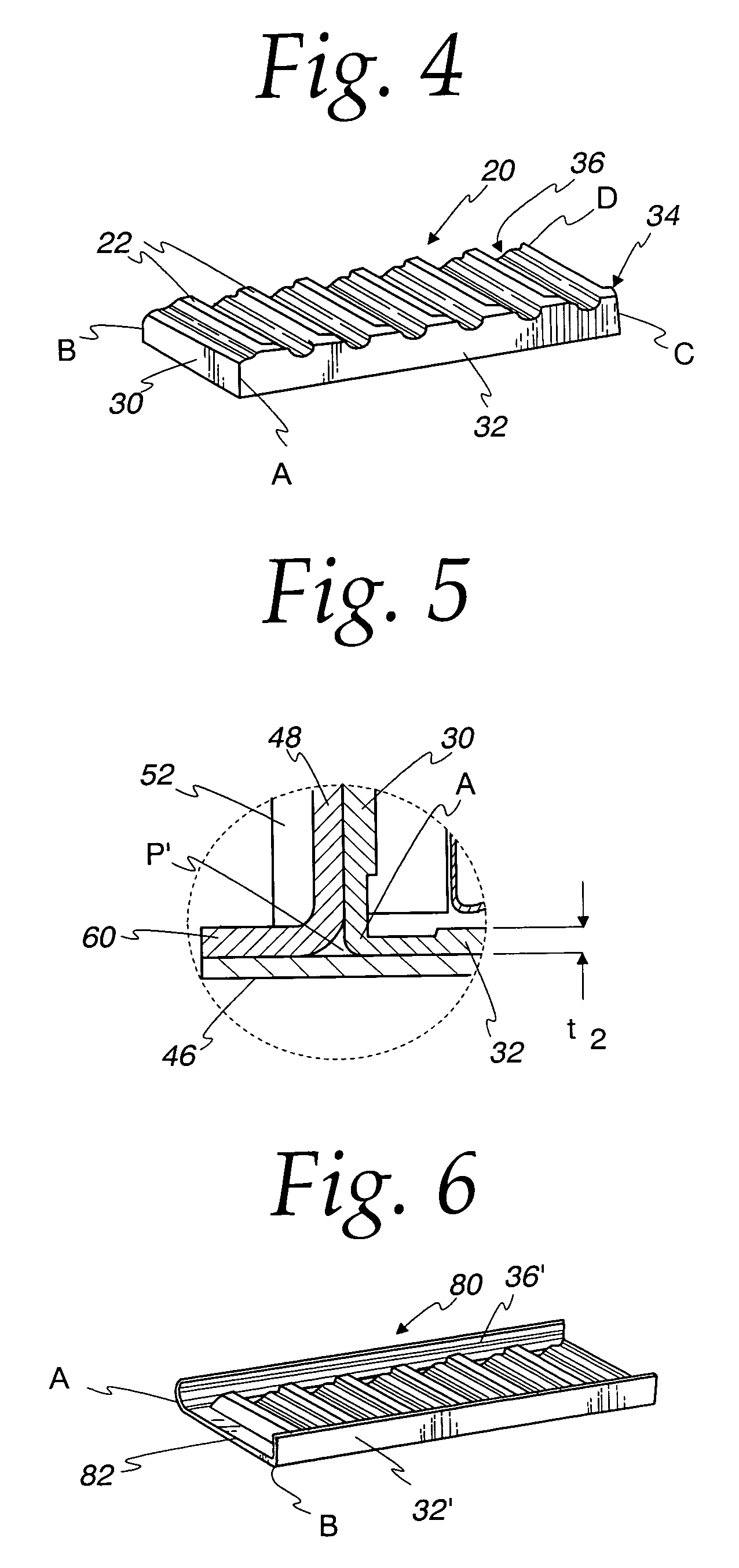Heat exchanger and method of production
a technology of heat exchangers and manifolds, which is applied in the direction of indirect heat exchangers, lighting and heating apparatus, stationary conduit assemblies, etc., can solve the problems of difficult process-reliable manufacture of such heat exchangers, difficult management, and difficult connection of components, so as to reduce the thickness of sheets
- Summary
- Abstract
- Description
- Claims
- Application Information
AI Technical Summary
Benefits of technology
Problems solved by technology
Method used
Image
Examples
Embodiment Construction
[0040]In the practical example of a heat exchanger 18 according to FIGS. 1 to 3, headers 20 (also known as header plates) may be provided such as shown in FIG. 4. Openings 22 suitable for connecting to the ends of flat tubes 24 are included in the header 20. Suitable fins 26 are provided between the tubes 24 to assist in heat exchange, such as the illustrated serpentine fins which are known in the art,
[0041]The header 20 such as illustrated in FIGS. 1–4 is generally rectangular, with four flanges 30, 32, 34, 36 oriented at generally right angles to the generally flat dimension of the header 20 (i.e., extend generally in the direction of the tubes 24) with the flanges 30–36 oriented in a box-like configuration and connected at the rectangular corners A, B, C, D of the header 20 (flanges 34, 36 are hidden in the perspective view of FIG. 4).
[0042]The header 20 is assembled as described in more detailed hereafter with other closure pieces to form a manifold 40 which defines an enclosed ...
PUM
| Property | Measurement | Unit |
|---|---|---|
| outer bending radii | aaaaa | aaaaa |
| bending radius | aaaaa | aaaaa |
| thickness | aaaaa | aaaaa |
Abstract
Description
Claims
Application Information
 Login to View More
Login to View More - R&D
- Intellectual Property
- Life Sciences
- Materials
- Tech Scout
- Unparalleled Data Quality
- Higher Quality Content
- 60% Fewer Hallucinations
Browse by: Latest US Patents, China's latest patents, Technical Efficacy Thesaurus, Application Domain, Technology Topic, Popular Technical Reports.
© 2025 PatSnap. All rights reserved.Legal|Privacy policy|Modern Slavery Act Transparency Statement|Sitemap|About US| Contact US: help@patsnap.com



